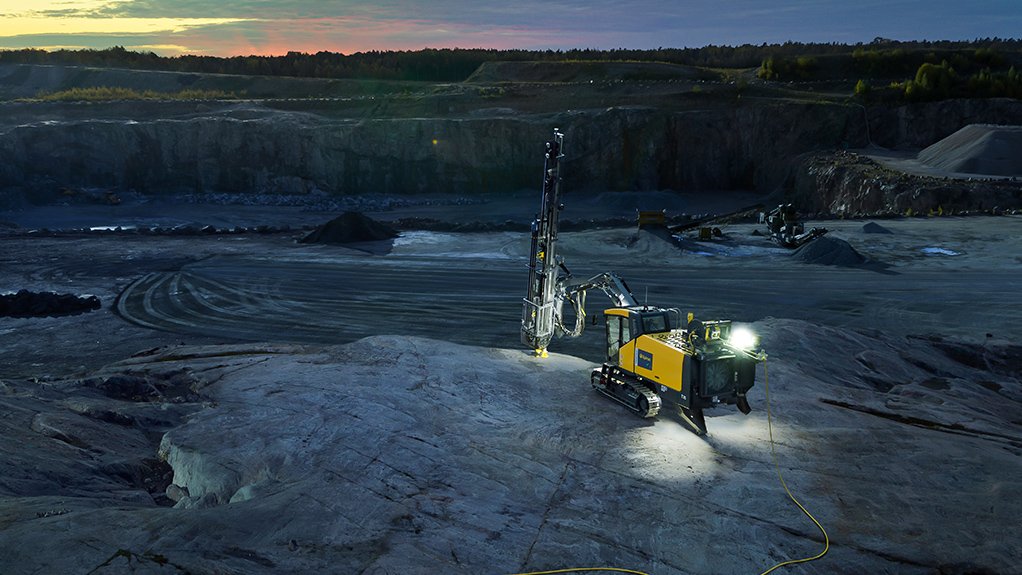Although the global mining sector has set ambitious targets to reduce its carbon emissions contribution, the sector needs to thoroughly evaluate how to go about meeting these targets amid various challenges.
The sector has pursued a combination of switching to renewable-energy sources, identifying opportunities to improve efficiencies to reduce energy consumption and investing in electric vehicles and low-emission fuels as a means of addressing its emissions.
In a recent study, engineering consultancy firm SRK Consulting explored a range of decarbonisation technologies being applied or tested by the mining sector – which highlighted many opportunities aligned to those identified above – across commodities.
“These include solar, wind and hydro electric energy alternatives; processing alternatives such as high-pressure grinding rollers, pre-treatment and flotation or hydrometallurgical processing; and equipment alternatives such as trolley assist, electric and hydrogen vehicles and hydrogen fuel cells, to name a few,” says SRK Consulting associate partner and principal scientist Philippa Burmeister.
However, the application of these various alternatives has to be carefully assessed, considering each project’s specific conditions, and what would be practical for the site and operation, adds Burmeister.
While switching to renewable energy is the first step for most operations, this can achieve only part of the savings sought, especially as other initiatives, such as electrification of haulage, increase electricity demand, she adds.
“For greenfield projects, considering low-carbon alternatives during concept and prefeasibility studies is critical, as it is much easier to evaluate options before commitments are made,” says SRK Consulting principal environmental scientist Ashleigh Maritz.
For brownfield projects, the focus needs to be on identifying opportunities to improve efficiencies by assigning a carbon cost and considering operations in a more holistic way.
Stakeholders need to evaluate how mining, processing and smelting solutions can be combined to reduce emissions.
Maritz adds that pressure for decarbonisation in the mining sector is being driven by financiers, investors, stock exchanges, end-customers, civil society and mining companies themselves.
“They are increasingly insisting on detailed reporting on not only Scope 1 and 2 emissions but also Scope 3 emissions to a certain degree,” she says.
Scope 1 covers greenhouse-gas (GHG) emissions that a company produces directly. Scope 2 emissions are mainly from electricity bought from an external supplier, if generated from fossil fuels. Scope 3 emissions refer to emissions produced by upstream suppliers and downstream customers.
Burmeister explains that, for many commodities, downstream emissions are greater than the emissions generated by mining. Therefore, the way in which the mining operations and smelters work together to identify solutions which reduce the total emissions will become increasingly important.
Embracing Change
Most challenges related to mine decarbonisation efforts relate to technical aspects; however, mines have to determine their economics clearly and confidently in terms of regulatory reporting, says SRK Consulting director and principal consultant Andrew van Zyl.
“While the potential positive technical and economic impacts, including the costs and benefits, of new carbon-reducing technologies are promising, many are difficult to estimate accurately.”
He adds that this is significant, as the technical studies that underpin compliance and other reporting usually target a specific level of accuracy.
Therefore, it is difficult to achieve a 15% level of accuracy required for financing new projects when the project relies on new technology that is still being developed.
Further, contractual challenges pertaining to independent power producers need to be resolved as mines embrace renewable-energy generation to reduce their Scope 2 emissions.
While mines would like to integrate renewable power, the opportunities to generate such power may be physically located elsewhere and the energy generated by the renewable power may not actually be used by the mine.
However, the mine can earn Renewable Energy Credits by helping to facilitate the development of this additional capacity.
“The contractual challenge is ensuring that these credits are properly accounted for and trying to align the duration of the power purchase agreement assets with that of the mine, which is often shorter,” adds Van Zyl.
These challenges have to be addressed amid volatile market conditions and climate change, consequently making it more difficult to resolve or mitigate such challenges.
“While there are some ‘low hanging fruits’ in the form of switching from electricity generated by fossil fuels to electricity generated from renewable energy, this will not be sufficient, especially as the demand for electricity grows.”
Therefore, the mining industry needs to change its current practices to reduce GHG emissions sufficiently to minimise global warming.
Several solutions are being investigated using either existing or new technologies, and SRK is working with clients to help the industry play its role in reducing GHG emissions, Van Zyl concludes.
Edited by: Zandile Mavuso
Creamer Media Senior Deputy Editor: Features
EMAIL THIS ARTICLE SAVE THIS ARTICLE
ARTICLE ENQUIRY
To subscribe email subscriptions@creamermedia.co.za or click here
To advertise email advertising@creamermedia.co.za or click here















